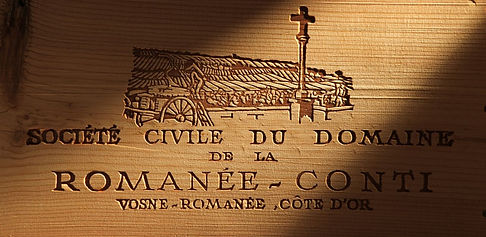

S
A B C D E F G H I J K L M N O P Q R S T U V W X Y Z
SONO-STAG
SAAL-SAIN SAIN-SAIN SAIN-SASS SASS-SAVO SAXU-SCRE SCRE-SICI SIGN-SONO SONO-STAG STAG-SUPE
Only 4,5 and 5,0 NJP-wines (Nenad Jelisic Points) are presented as the best vintages.
If for some wine behind “the best vintages” stands “none”, it means that none of the wine's vintages got 4,5 NJP or 5,0 NJP.
Sonoma County, Cabernet Sauvignon, the best vintages, 1994, 2001, 2002, 2005, 2007, 2010, 2012, 2013 and 2015. (2018-11)
Sorte O Soro, see Bodegas Rafael Palacios.
South Australia the best vintages, 1971, 1976, 1986, 1990, 1998, 2001, 2002, 2005, 2008, 2010 and 2012. (2018-11)
South Australia wine regions, there are 18 wine regions in South Australia: Adelaide and Adelaide Plains, Adelaide Hills, Barossa Valley, Clare Valley, Coonawarra, Currency Creek, Eden Valley, Kangaroo Island, Langhorne Creek, McLaren Vale, Mount Benson, Mount Gambier, Padthaway, Riverland, Robe, Southern Fleurieu, Southern Flinders and Wrattonbully. (2012-12)
South Coast, a United States’ wine region that is located in California. The wine region, which is itself classified as an appellation (AVA), consists of 3 wine districts: Riverside (Temecula) County, Orange County and San Diego County, and 10 appellations (AVA): Antelope Valley, Cucamonga Valley, Leona Valley, Malibu-Newton Canyon, Ramona Valley, Saddle Rock-Malibu, San Pasqual Valley, Sierra Pelona Valley, South Coast and Temecula Valley. (2012-03)
Southern Rhône, a French wine district that belongs to the wine region Rhône and that consists of 18 appellations: Beaumes de Venise, Cairanne, Châteauneuf-du-Pape, Clairette de Bellegarde, Costières de Nîmes, Côtes du Rhône Régional, Côtes du Rhône Villages, Côtes du Vivarais, Duché d’Uzès, Gigondas, Grignan-les-Adhémar, Lirac, Luberon, Rasteau, Tavel, Vacqueyras, Ventoux and Vinsobres. The Southern Rhône, which has a warmer climate than the Northern Rhone, has both a Mediterranean climate and a mixed Mediterranean and continental climate. The district's climate is influenced by mistral, a hard northern wind that usually blows during the winter and spring. (2019-02)
Southern Rhône grapes, most Grenache followed by Syrah, Mourvèdre, Cinsault as well as Carignan. (2012-04)
Southern Rhône soils, vary. Rocky soil on the heights, and clayey and sandy soil on low-lying terrain. (2012-04)
Southern Rhône the best vintages, 1978, 1990, 1998, 2000, 2001, 2005, 2007, 2010 and 2016. (2021-01)
South Region, a Chilean wine region that consists of 3 wine districts/valleys: Bío Bío Valley, Itata Valley (ee-tah-ta) and Malleco Valley (mah-yay-ko). The region has 12,821 ha planted with vine and its three districts, like the region itself, is/are classified as appellation/s (Denominación de Origen). (2012-03)
Spanish wine classes, there are four classes: 1. DOCa (Denominación de Origen Calificada), 2. DO (Denominación de Origen), 3. Vino de la Tierra ("country wine") samt 4. Vino de Mesa ("table wine").
Spanish DO (Denominación de Origen), there are 68 Denominación de Origen: Abona, Alella, Alicante, Almansa, Ampurdán-Costa Brava, Arlanza, Arribes, Bierzo, Binissalem, Bullas, Calatayud, Campo de Borja, Cariñena, Cataluña, Cava, Cigales, Conca de Barberá, Condado de Huelva, Costers del Segre, Chacolí de Álava-Arabako Txakolina, Chacolí de Guetaria-Getariako Txakolina, Chacolí de Vizcaya-Bizkaiko Txakolina, El Hierro, Empordà, Gran Canaria, Jerez-Xérès-Sherry, Jumilla, La Gomera, La Mancha, La Palma, Lanzarote, Málaga, Manchuela, Manzanilla-Sanlúcar de Barrameda, Méntrida, Mondéjar, Monterrei, Montilla-Moriles, Montsant, Navarra, Penedés, Pla de Bages, Pla i Llevant, Rías Baixas, Ribeira Sacra, Ribeiro, Ribera del Duero, Ribera del Guadiana, Ribera del Júcar, Rueda, Sierras de Málaga, Somontano, Tacoronte-Acentejo, Tarragona, Terra Alta, Tierra de León, Tierra del Vino de Zamora, Toro, Uclés, Utiel-Requena, Valdeorras, Valdepeñas, Valencia, Valle de Güímar, Valle de la Orotava, Vinos de Madrid, Ycoden-Daute-Isora and Yecla. (2014-03)
Spanish DOCa (Denominación de Origen Calificada), there are only two Denominación de Origen Calificada: Priorat and Rioja. (2014-03)
Spottswoode, Cabernet Sauvignon (red dry wine), St. Helena, Napa Valley, North Coast, California, USA, the best vintages, until vintage 1989 none; 1990, 1991, 1992, 1994, 1995, 1997, 2001, 2002, 2003, 2004, 2005, 2006, 2007, 2009, 2010, 2011, 2012, 2013, 2014, 2015 and 2016. (2018-11)
Spring Mountain District, a US appellation (AVA), since 1993, which is located in the Napa Valley AVA, California. The appellation has about 3,480 hectares, of which about 405 are planted with vine. The vineyards lie between 120 and 800 metres above sea level. The average yield is impressively low 12 to 24 hl/ha. (2016-02)
Spring Mountain District grapes, Cabernet Sauvignon 55%, Merlot 19%, Chardonnay 5%, Cabernet Franc 4%, Petite Syrah 3%, Sauvignon Blanc 2% and other grapes 12%. (2016-02)
Spring Mountain District soils, weathered volcanic and sedimentary rocks. Mainly volcanic in the north, and sandstone and shale in the south. Well drained and poor in nutrients. (2016-02)
Spätburgunder, German name for Pinot Noir.
Spätlese, a wine class in the highest German wine class "Qualitätswein mit Prädikat (QmP)" where the wines are divided into 6 different quality classes depending on must weight (Öchlese; an Öchlese degree corresponds to 2-2,5 grams of sugar per litre of wine). A Spätlese-wine has a must weight of about 85 degrees i.e. 170-212 g sugar/l. Spätlese also means that the grapes were harvested late i.e. the harvest begins 2 weeks after the grapes have reached their full maturity.
SQVP, = Single Quinta Vintage Port. (2017-12)
Staglin Family Vineyard, Cabernet Sauvignon (red dry wine), Rutherford, Napa Valley, North Coast, California, USA, the best vintages, until vintage 2001 none; 2002, 2003, 2005, 2007, 2009, 2010, 2012, 2013 and 2015. (2018-11)
Stags Leap District, an American United States’ AVA (appellation), since 1989, that is located in Napa Valley AVA, California. It is Napa's smallest appellation. The appellation, which is known for its Cabernet Sauvignon-wines (Shafer Vineyards Hillside Select, Clos du Val, Stag's Leap Wine Cellars Cask 23 etc), is 1,5 km wide and just under 5 km long and has 526 ha planted with vine. The yield lies at an impressive low 11 hl/ha. (2014-12)
Stags Leap District grapes, Cabernet Sauvignon 80%, Merlot 15%, Cabernet Franc 2%, Petite Syrah 2% and other grapes 1%. (2014-12)


NJ Wines
 |  |  |  |  |  |
|---|